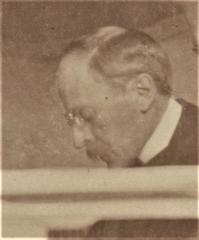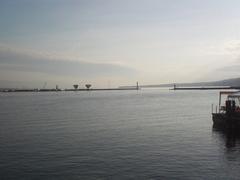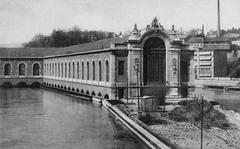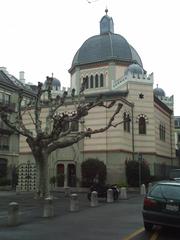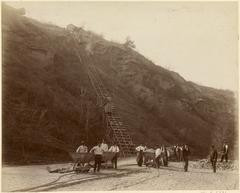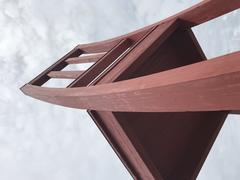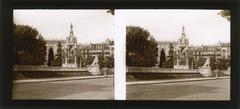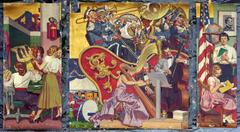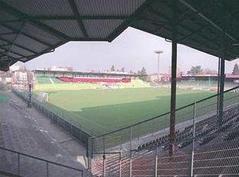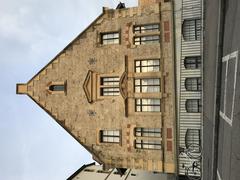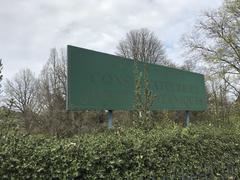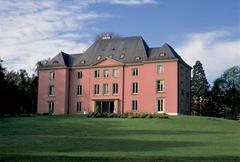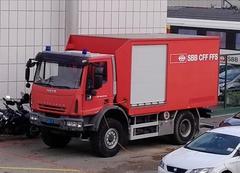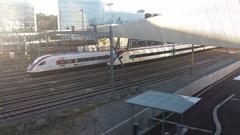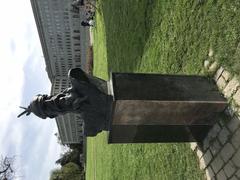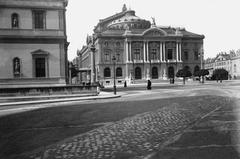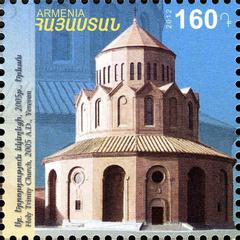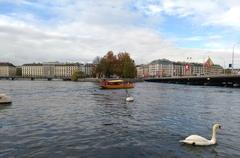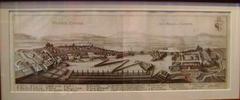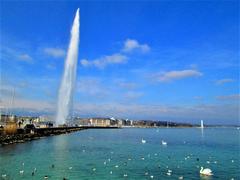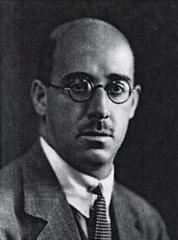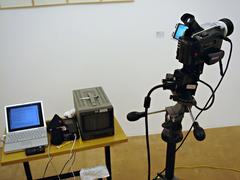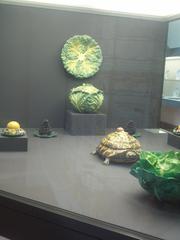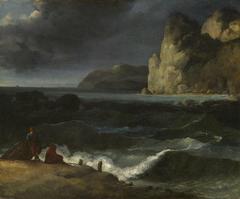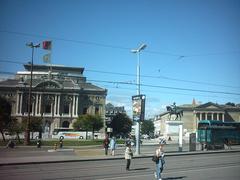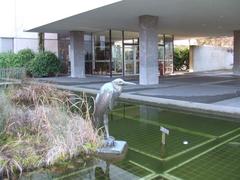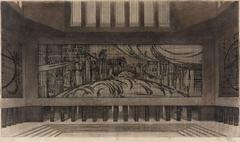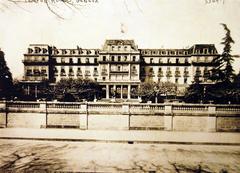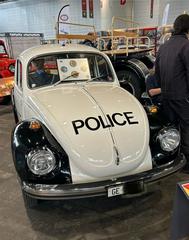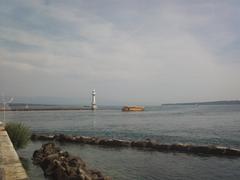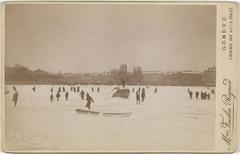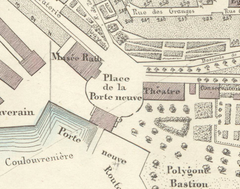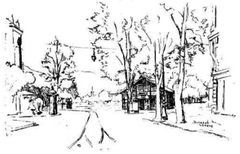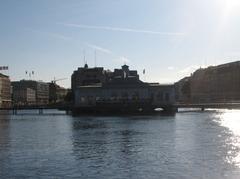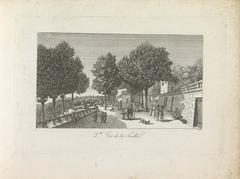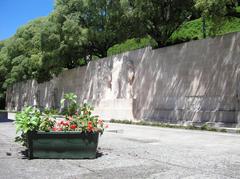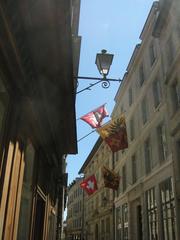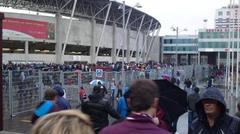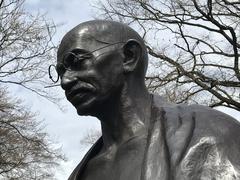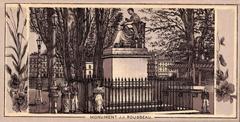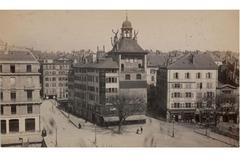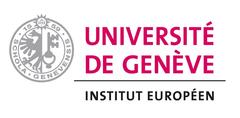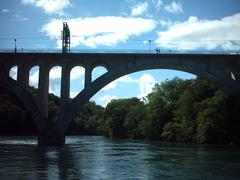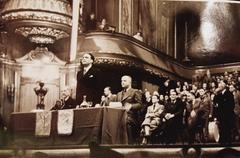Monument To Honour The Actions Of The Swiss Brigadists
Monument To Honour The Actions Of The Swiss Brigadists, Geneva: Visiting Hours, Tickets & Historical Information
Date: 14/06/2025
Introduction
The Monument To Honour The Actions Of The Swiss Brigadists in Geneva stands as a solemn tribute to the approximately 800 Swiss volunteers who risked everything to fight fascism during the Spanish Civil War (1936–1939). Located in a city renowned for its humanitarianism and international engagement, the monument not only commemorates individual and collective bravery but also invites reflection on the interplay between Swiss neutrality and international solidarity. This comprehensive guide will deepen your understanding of the monument’s historical context, cultural significance, visitor information, accessibility, and nearby attractions—enriching your experience whether you are a history enthusiast, a local resident, or a traveler.
Historical Background: The Swiss Brigadists and the Spanish Civil War
The “Swiss Brigadists” refers to the Swiss volunteers who defied their nation’s policy of neutrality to join the International Brigades in the Spanish Civil War. Motivated by anti-fascist and socialist ideals, these men and women risked prosecution and loss of citizenship. Their actions remain a powerful statement of conscience, highlighting a historical tension between the state’s strict neutrality and personal convictions (Commons Wikimedia). Of the roughly 800 Swiss volunteers, about 170 lost their lives in Spain.
Upon returning home, many Brigadists faced legal consequences and social marginalization. Their story, once suppressed due to political sensitivity, has become increasingly recognized through public monuments and official commemorations (Explorial).
Monument Overview
Location and Setting
The monument is located in Parc Baud-Bovy (sometimes referenced as Parc des Bastions), in Geneva’s Les Acacias district. It sits near cultural and historical landmarks such as the Musée d’ethnographie de Genève and within walking distance of vibrant neighborhoods like Carouge and Plainpalais (Mapcarta). Its placement in a public park underscores Geneva’s commitment to accessible and inclusive memory culture.
Artistic Features
Unveiled in 2000, the monument is characterized by a modernist design of stone and metal, conveying resilience and dignity. Its clean lines and geometric forms invite contemplation, while inscriptions and plaques provide historical context. The design is intentionally subtle, encouraging personal reflection on themes of courage and sacrifice.
Symbolism
Engravings and abstract forms evoke both the collective spirit and individual sacrifices of the Swiss Brigadists. The monument’s location in Geneva—a city synonymous with humanitarianism and international cooperation—reinforces its message of global solidarity and resistance to oppression (Geneve.com).
Visiting Information
Opening Hours
- Monument Access: Open-air and accessible year-round, 24 hours a day.
- Parc Baud-Bovy: Generally open from dawn to dusk; no formal opening or closing times.
Admission & Tickets
- Entry: Free. No tickets or reservations required.
Guided Tours
- While the monument does not offer its own regular guided tours, many local historical walking tours—including those focused on Geneva’s role in international history—incorporate the site. Check with the Geneva tourism office or local operators for schedules.
Getting There
Public Transport
- Tram: Lines 15 and 17 stop at “Acacias,” close to Parc Baud-Bovy.
- Bus: Lines 1, 35, and D serve the area.
- Geneva Transport Card: Visitors staying at approved accommodations receive this card, allowing free use of public transport (Geneva Transport Card).
Walking & Cycling
- The monument is about a 20–25 minute walk from Geneva’s Old Town.
- Geneva’s extensive cycling network and bike-sharing stations make it easy to reach by bicycle (Geneva.info).
Parking
- Limited street parking is available nearby. Parking garages such as Plainpalais and Uni Dufour are within a 10–15 minute walk (Geneva.info).
Facilities & Accessibility
- Wheelchair Access: Paved, step-free paths ensure accessibility for visitors with limited mobility (Ville de Genève).
- Rest Areas: Benches throughout the park offer places to sit and reflect.
- Restrooms: Not available within Parc Baud-Bovy; nearest facilities are at Parc des Bastions, Plainpalais, and Cornavin station (Geneva.info).
- WiFi: Free WiFi is available in many public spaces and nearby cafés (Geneva.com).
- Food & Drink: Numerous cafés and restaurants are located in the adjacent Les Acacias and Carouge districts.
Cultural Significance & Educational Role
The monument embodies the ongoing debate within Switzerland about the meaning and boundaries of neutrality (NZZ; Swiss Standpoint). By honoring those who chose solidarity over non-intervention, it fosters dialogue about moral responsibility, historical memory, and the role of individuals in shaping national identity.
The site is used for commemorative ceremonies, educational events, and public discussions. Its role in memory culture is especially poignant given Switzerland’s evolving stance on neutrality and humanitarian engagement (Geneva Solutions).
Nearby Attractions
- Musée d’Ethnographie de Genève (MEG): Renowned ethnographic collections.
- Parc des Bastions & Reformation Wall: Historic park with Geneva’s key religious monument (Musee-Reforme).
- Plainpalais: Famous for its markets and cultural activities.
- Carouge: Mediterranean-style neighborhood with artisan shops and cafés.
- Geneva Old Town: Medieval streets and St. Peter’s Cathedral (Geneva.com).
- Lake Geneva & Jet d’Eau: Iconic waterfront and fountain (Timeout).
Visitor Tips
- Best Times: Spring and summer for pleasant weather; mornings and late afternoons for tranquility.
- Photography: Permitted; be respectful of the site’s commemorative purpose.
- Languages: Plaques are in French; English is widely spoken at tourist centers.
- Safety: Geneva is generally safe; use standard precautions at night.
- What to Bring: Comfortable shoes, water, and a camera.
Frequently Asked Questions (FAQ)
Q: Is there a fee to visit the monument?
A: No, it is free and open to all.
Q: What are the opening hours?
A: The monument is accessible year-round, 24 hours a day.
Q: Are guided tours available?
A: Some local tours include the monument—check with the tourism office.
Q: Is the site accessible for wheelchairs?
A: Yes, paved paths ensure full accessibility.
Q: Where are the nearest restrooms?
A: Closest are at Parc des Bastions, Plainpalais, and Cornavin station.
Educational and Social Impact
The monument serves as a platform for education, fostering reflection on themes such as neutrality, solidarity, and global citizenship. It is an integral site for school groups, civic organizations, and commemorative events, supporting intergenerational dialogue and community engagement (Ville de Genève; Explorial).
Visuals and Media
Official photos and virtual tours are available on Geneva’s tourism website and related cultural heritage portals (Geneva Tourism website). Images are typically accompanied by descriptive alt text to ensure accessibility.
Key Takeaways & Planning Tips
- The monument is a unique site for reflection on history, neutrality, and international solidarity.
- Free, year-round access; easily reached by public transport, foot, or bike.
- Combine your visit with Geneva’s many nearby cultural attractions.
- Enhance your experience with digital resources such as the Audiala app.
Sources and Further Reading
- Geneva Tourism: National Monument
- Mapcarta: Monument location
- Geneva.info
- Explorial: Geneva Monuments aux Morts
- NZZ: Swiss Neutrality
- Swiss Standpoint: Neutrality and Humanitarianism
- Ville de Genève: Accessibility
- Wikipedia: International Brigades

